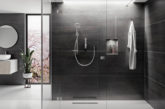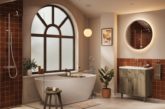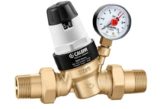
Bidet-style toilets are becoming more popular in the UK. Unfortunately, so is ‘DIY plumbing’, and inadequate installation alongside ablutionary showers poses a serious contamination risk to water systems. Jerry Whiteley, Technical Manager at the Chartered Institute of Plumbing and Heating Engineering (CIPHE), explains.
Bidet-style toilets combine the traditional toilet with bidet functionality, which is ideal for saving space in homes. Remember nationwide toilet paper shortages during the early-days of the COVID-19 pandemic? It is reported that this accelerated a longer-standing trend of increased sales of bidet-style toilets. Often, these are combined with ablutionary showers which are designed for personal cleansing while using the toilet.
The sanitation risks
While bidet-style toilets are common across Europe and the rest of the world, the Victorian nature of the UK plumbing network means significant adaptation is required for them to become more commonplace in the UK. As such, a careful approach is critical when installing bidet-style toilets and ablutionary showers to prevent backflow from the WC into the wholesome water supply – including drinking water.
When an ablution hose is rested in a toilet bowl, or other areas of potential contamination such as a bath or washbasin, there is a significant risk that water will travel back through the hose. This is down to pressure changes in the system, which can result due to burst water mains or opening of other outlets in the home. On a basic level, ensuring that the hose itself is not long enough to allow it to rest in a toilet bowl should be the first step in preventing contamination.
Further, bidet seats that contain a water jet may be located below the water line in the case of a toilet blockage. Both of these run the risk of contaminating the water supply, affecting both the home itself and surrounding properties.
Preventing backflow is paramount, and there are a couple of ways to achieve this. The most optimum approach involves an ‘interposed cistern’ with an air gap (Water Regulations G15.9 & G15.10, section 6 pages 28,29,30,31). By taking this approach, water from the bidet or WC pan cannot get back past the air-gap at the inlet valve in the cistern, and into the wholesome water supply. Alternatively, using a pipe interrupter (Type DC device) can work. This can, however, present technical design challenges, with other problems potentially arising from reduced water pressure and flow – so it is vital to give careful consideration before taking this route.
This is where it is crucial to engage with a qualified engineer who is competent in delivering this type of installation.
The dangers of bad plumbing
Poorly installed bidet-style toilets with ablutionary showers are a genuine public health issue, particularly as the risk extends beyond the users themselves. It is a problem that is being exacerbated by poor workmanship, with cost-savings concerningly being prioritised over high-quality installation.
DIY plumbing is a phenomenon that has grown as more information is readily available on the internet. The issue with this is twofold: firstly, the installation is being carried out by someone who is not qualified or competent, and therefore likely to make mistakes or lack precision. Secondly, much of the information surrounding bidet-style toilets is based on international standards. This means that products purchased online, as well as accompanying installation information, are not compliant with UK water regulations.
We also continue to see examples of rogue traders undercutting the prices of appropriate installation by offering cheaper, but ultimately dangerous shortcuts. This could include simply using a double-check valve in the ablutionary hose, despite the fact this is only appropriate for category 3 fluids. This is concerning given that anything that may contain faecal matter is category 5, and therefore needs a more robust approach, as outlined above.
Closing thoughts
With bidet-style toilets growing in popularity in the UK, qualified plumbing engineers have a critical role to play in safeguarding public health. Much of this relies on educating consumers about the importance of avoiding cost-cutting, and outlining how the system changes that accompany bidet installation are necessary to prevent contamination.
For more information about the CIPHE, or to become a member, contact the team at [email protected] or call 01708 472791.













